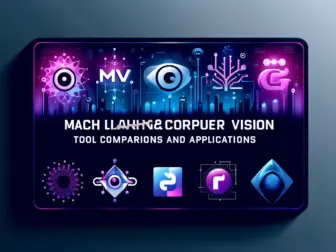Tag - Embedded Applications
Blog , May 29, 2024 , Computer Vision, Embedded Applications, Keras, Machine Learning, Model Training, OpenCV, OpenMV, PyTorch, Real-Time Object Detection, TensorFlow
Exploring the World of Embedded Applications
Exploring the World of Embedded Applications
Embedded applications are the cornerstone of modern technology, playing a crucial role in various devices we use daily. These applications are designed to perform specific functions within a larger system, often operating in real-time with limited resources. From smartphones and smart home devices to industrial machinery and automotive systems, embedded applications are everywhere, silently working behind the scenes to ensure seamless performance.
One of the key characteristics of embedded applications is their close integration with the hardware they run on. Unlike traditional software applications that can be easily ported to different platforms, embedded applications are tailored to the specific requirements of the hardware they are deployed on. This tight coupling allows for optimized performance and efficient resource utilization, making embedded systems ideal for applications where reliability and speed are paramount.
Embedded applications can be found in a wide range of devices and systems, including consumer electronics, medical devices, automotive systems, and industrial automation. In consumer electronics, embedded applications power devices such as smartphones, tablets, smart TVs, and wearable gadgets. These applications enable various functionalities, such as communication, multimedia playback, and sensor data processing, delivering a seamless user experience.
In the medical industry, embedded applications are used in devices like pacemakers, insulin pumps, and diagnostic equipment. These applications are critical for monitoring patient health, delivering medications, and collecting vital data for medical professionals. The reliability and accuracy of embedded applications in medical devices are essential for ensuring patient safety and well-being.
Automotive systems also rely heavily on embedded applications, with modern vehicles containing numerous embedded systems for functions such as engine control, navigation, entertainment, and driver assistance. These applications help improve vehicle performance, safety, and efficiency, enhancing the overall driving experience for consumers.
In the industrial sector, embedded applications play a vital role in automation and control systems, powering machinery and equipment in manufacturing plants, power plants, and other industrial settings. These applications enable precise control of processes, monitoring of equipment performance, and real-time data analysis for optimizing operations and ensuring product quality.
The development of embedded applications requires specialized skills and knowledge in areas such as embedded systems design, real-time programming, low-level hardware interaction, and embedded software development tools. Embedded developers must have a deep understanding of the hardware platforms they are working with, as well as the ability to optimize code for performance, power efficiency, and reliability.
As technology continues to advance, the demand for embedded applications will only grow, with new opportunities emerging in areas such as Internet of Things (IoT), artificial intelligence, autonomous systems, and smart cities. The ability to create efficient, reliable, and secure embedded applications will be key to unlocking the full potential of these emerging technologies and shaping the future of innovation.
In conclusion, embedded applications are the backbone of modern technology, powering a wide range of devices and systems that we rely on every day. From consumer electronics to industrial machinery, these applications enable seamless functionality, enhanced performance, and improved user experiences. As technology evolves, the importance of embedded applications will continue to grow, driving innovation and shaping the future of connected devices and smart systems.
